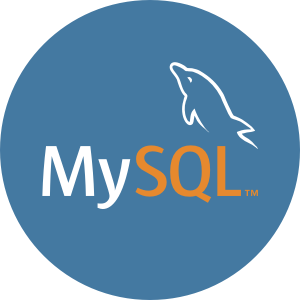DuckDB vs MySQL
A detailed comparison
Compare DuckDB and MySQL for time series and OLAP workloads
Learn About Time Series DatabasesChoosing the right database is a critical choice when building any software application. All databases have different strengths and weaknesses when it comes to performance, so deciding which database has the most benefits and the most minor downsides for your specific use case and data model is an important decision. Below you will find an overview of the key concepts, architecture, features, use cases, and pricing models of DuckDB and MySQL so you can quickly see how they compare against each other.
The primary purpose of this article is to compare how DuckDB and MySQL perform for workloads involving time series data, not for all possible use cases. Time series data typically presents a unique challenge in terms of database performance. This is due to the high volume of data being written and the query patterns to access that data. This article doesn’t intend to make the case for which database is better; it simply provides an overview of each database so you can make an informed decision.
DuckDB vs MySQL Breakdown
 |
 |
|
| Database Model | Columnar database |
Relational database |
| Architecture | DuckDB is intended for use as an embedded database and is primariliy focused on single node performance. |
MySQL uses a client-server model with a multi-layered server design. It supports the SQL query language and offers various storage engines, such as InnoDB and MyISAM, for different use cases. MySQL can be deployed on-premises, in the cloud, or as a managed service. |
| License | MIT |
GNU General Public License v2 (for the open-source Community Edition) |
| Use Cases | Embedded analytics, Data Science, Data processing, ETL pipelines |
Web applications, e-commerce, data warehousing, content management systems, business applications |
| Scalability | Embedded and single-node focused, with limited support for parallelism |
Supports vertical scaling by adding more resources to a single node; horizontal scaling can be achieved through replication, sharding, and third-party tools |
DuckDB Overview
DuckDB is an in-process SQL OLAP (Online Analytical Processing) database management system. It is designed to be simple, fast, and feature-rich. DuckDB can be used for processing and analyzing tabular datasets, such as CSV or Parquet files. It provides a rich SQL dialect with support for transactions, persistence, extensive SQL queries, and direct querying of Parquet and CSV files. DuckDB is built with a vectorized engine that is optimized for analytics and supports parallel query processing. It is designed to be easy to install and use, with no external dependencies and support for multiple programming languages.
MySQL Overview
MySQL is an open source relational database management system that was first released in 1995. It is one of the most popular databases worldwide due to its ease of use, reliability, and performance. MySQL is widely used for web applications, online transaction processing, and data warehousing. Oracle Corporation acquired MySQL in 2010, but it remains open source software with an active community of contributors.
DuckDB for Time Series Data
DuckDB can be used effectively with time series data. It supports processing and analyzing tabular datasets, which can include time series data stored in CSV or Parquet files. With its optimized analytics engine and support for complex SQL queries, DuckDB can perform aggregations, joins, and other time series analysis operations efficiently. However, it’s important to note that DuckDB is not specifically designed for time series data management and may not have specialized features tailored for time series analysis like some dedicated time series databases.
MySQL for Time Series Data
MySQL can be used for storing and analyzing time series data, but it will not be as efficient as a dedicated time series databases. MySQL’s flexibility and support for various indexing techniques can make it a suitable choice for small to medium sized time series datasets. For large-scale time series data workloads, with high write throughput or use cases where low latency queries are required, MySQL will tend to struggle unless highly customized.
DuckDB Key Concepts
- In-process: DuckDB operates in-process, meaning it runs within the same process as the application using it, without the need for a separate server.
- OLAP: DuckDB is an OLAP database, which means it is optimized for analytical query processing.
- Vectorized engine: DuckDB utilizes a vectorized engine that operates on batches of data, improving query performance.
- Transactions: DuckDB supports transactional operations, ensuring the atomicity, consistency, isolation, and durability (ACID) properties of data operations.
- SQL dialect: DuckDB provides a rich SQL dialect with advanced features such as arbitrary and nested correlated subqueries, window functions, collations, and support for complex types like arrays and structs
MySQL Key Concepts
- Table: A collection of related data organized in rows and columns, which is the primary structure for storing data in MySQL.
- Primary Key: A unique identifier for each row in a table, used to enforce data integrity and enable efficient querying.
- Foreign Key: A column or set of columns in a table that refers to the primary key in another table, used to establish relationships between tables.
DuckDB Architecture
DuckDB follows an in-process architecture, running within the same process as the application. It is a relational table-oriented database management system that supports SQL queries for producing analytical results. DuckDB is built using C++11 and is designed to have no external dependencies. It can be compiled as a single file, making it easy to install and integrate into applications.
MySQL Architecture
MySQL is a relational database management system that uses SQL for defining and manipulating data. It follows the client-server model, where a MySQL server accepts connections from multiple clients and processes their queries. MySQL’s architecture includes a storage engine framework that allows users to choose from different storage engines, such as InnoDB, MyISAM, or Memory, to optimize the database for specific use cases.
Free Time-Series Database Guide
Get a comprehensive review of alternatives and critical requirements for selecting yours.
DuckDB Features
Transactions and Persistence
DuckDB supports transactional operations, ensuring data integrity and durability. It allows for persistent storage of data between sessions.
Extensive SQL Support
DuckDB provides a rich SQL dialect with support for advanced query features, including correlated subqueries, window functions, and complex data types.
Direct Parquet & CSV Querying
DuckDB allows direct querying of Parquet and CSV files, enabling efficient analysis of data stored in these formats.
Fast Analytical Queries
DuckDB is designed to run analytical queries efficiently, thanks to its vectorized engine and optimization for analytics workloads.
Parallel Query Processing
DuckDB can process queries in parallel, taking advantage of multi-core processors to improve query performance.
MySQL Features
ACID compliance
MySQL supports transactions and adheres to the ACID (Atomicity, Consistency, Isolation, Durability) properties, ensuring data integrity and consistency.
Scalability
MySQL can scale both vertically and horizontally, depending on the storage engine and configuration.
Replication and high availability
MySQL supports various replication techniques, including master-slave and master-master replication, to provide high availability and fault tolerance.
DuckDB Use Cases
Processing and Storing Tabular Datasets
DuckDB is well-suited for scenarios where you need to process and store tabular datasets, such as data imported from CSV or Parquet files. It provides efficient storage and retrieval mechanisms for working with structured data.
Interactive Data Analysis
DuckDB is ideal for interactive data analysis tasks, particularly when dealing with large tables. It enables you to perform complex operations like joining and aggregating multiple large tables efficiently, allowing for rapid exploration and extraction of insights from your data.
Large Result Set Transfer to Client
When you need to transfer large result sets from the database to the client application, DuckDB can be a suitable choice. Its optimized query processing and efficient data transfer mechanisms enable fast and seamless retrieval of large amounts of data.
MySQL Use Cases
Web applications
MySQL is a popular choice for powering web applications, content management systems, and e-commerce platforms due to its flexibility, ease of use, and performance.
Online transaction processing (OLTP)
MySQL is suitable for OLTP systems that require high concurrency, fast response times, and support for transactions.
Data warehousing
While not specifically designed for data warehousing, MySQL can be used for small to medium-sized data warehouses, leveraging its support for indexing, partitioning, and other optimization techniques.
DuckDB Pricing Model
DuckDB is a free and open-source database management system released under the permissive MIT License. It can be freely used, modified, and distributed without any licensing costs.
MySQL Pricing Model
MySQL is available in multiple editions with different feature sets and pricing models. The MySQL Community Edition is open source and free to use, while the MySQL Enterprise Edition includes additional features, such as advanced security, monitoring, and management tools, and requires a subscription. Pricing for the Enterprise Edition depends on the number of server instances and the level of support required.
Get started with InfluxDB for free
InfluxDB Cloud is the fastest way to start storing and analyzing your time series data.